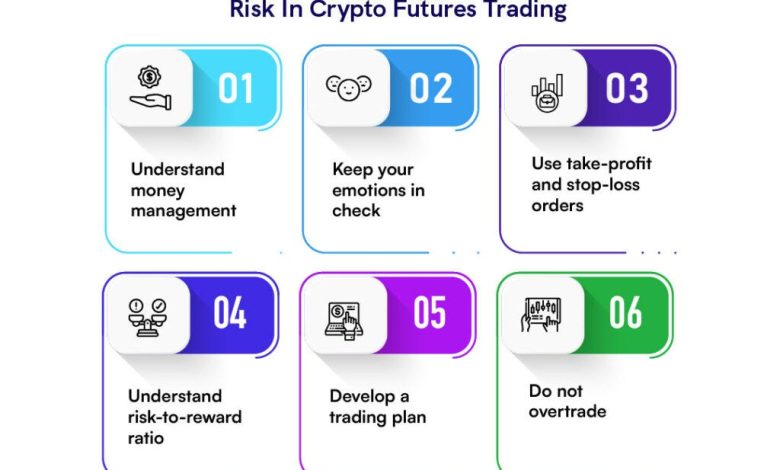Understanding Risk Management in Crypto Investments

- What is Risk Management in Crypto Investments?
- The Importance of Setting Investment Goals
- Diversification: Spreading Your Risk
- Understanding Volatility in Cryptocurrency Markets
- Tools and Strategies for Managing Risk
- The Role of Research and Due Diligence in Crypto Investments
What is Risk Management in Crypto Investments?
Risk management in crypto investments is a crucial aspect that every investor should consider. It involves identifying, assessing, and prioritizing risks in order to minimize, monitor, and control the impact of these risks on investment portfolios. By implementing effective risk management strategies, investors can protect their investments from potential losses and maximize their returns.
One key aspect of risk management in crypto investments is diversification. By spreading investments across different cryptocurrencies, investors can reduce the impact of a single asset’s performance on their overall portfolio. This helps to mitigate the risk of significant losses if one particular cryptocurrency underperforms.
Another important element of risk management is setting stop-loss orders. This allows investors to automatically sell a cryptocurrency if its price falls below a certain level, limiting potential losses. Additionally, investors should regularly review and adjust their risk management strategies based on market conditions and changes in their investment goals.
The Importance of Setting Investment Goals
Setting investment goals is a crucial step in managing risk when it comes to investing in cryptocurrencies. By establishing clear objectives, investors can better align their strategies with their financial aspirations. This helps in creating a roadmap for making informed decisions and staying focused on long-term success.
When setting investment goals, it is essential to consider factors such as risk tolerance, time horizon, and desired returns. Understanding these elements can help investors determine the appropriate level of risk to take on and the types of investments that align with their goals. By setting specific, measurable, achievable, relevant, and time-bound (SMART) goals, investors can track their progress and make adjustments as needed.
Having well-defined investment goals also helps in managing emotions and avoiding impulsive decisions. It provides a sense of direction and purpose, which can prevent investors from being swayed by market volatility or short-term fluctuations. By focusing on the bigger picture, investors can stay disciplined and avoid making decisions based on fear or greed.
Diversification: Spreading Your Risk
One effective strategy to manage risk in crypto investments is through **diversification**. By spreading your **risk** across different **assets**, you can reduce the impact of a potential loss on your overall **portfolio**. Diversification involves investing in a variety of **cryptocurrencies** or **tokens** rather than putting all your **money** into a single **asset**.
When you diversify your **investment**, you are less vulnerable to the **volatility** of any one **crypto**. If one **asset** performs poorly, the gains from other **assets** can help offset the losses. This can help you maintain a more stable **portfolio** over time.
However, it’s important to note that **diversification** does not guarantee profits or prevent **losses**. It is simply a way to spread your **risk** and potentially improve your chances of **success** in the long run. **Investors** should carefully research and choose **assets** that align with their **investment** goals and **risk tolerance**.
Understanding Volatility in Cryptocurrency Markets
Cryptocurrency markets are known for their high volatility, which can present both opportunities and risks for investors. Understanding volatility in these markets is crucial for effective risk management in crypto investments.
Volatility refers to the degree of variation in the price of a cryptocurrency over time. High volatility means that the price of a cryptocurrency can fluctuate significantly in a short period, while low volatility indicates more stable price movements.
There are several factors that can contribute to volatility in cryptocurrency markets, including market demand, regulatory developments, technological advancements, and macroeconomic trends. These factors can all influence the supply and demand dynamics of cryptocurrencies, leading to price fluctuations.
Investors need to be aware of the risks associated with volatility in cryptocurrency markets. While high volatility can result in substantial profits, it can also lead to significant losses if not managed properly. Implementing risk management strategies, such as setting stop-loss orders and diversifying your portfolio, can help mitigate the impact of volatility on your investments.
Tools and Strategies for Managing Risk
One of the key aspects of successful crypto investments is effectively managing risk. By utilizing the right tools and strategies, investors can mitigate potential losses and maximize their returns. Here are some essential tools and strategies for managing risk in the world of crypto investments:
- **Diversification:** One of the most effective ways to manage risk in crypto investments is through diversification. By spreading your investments across different cryptocurrencies, you can reduce the impact of any single asset’s poor performance on your overall portfolio.
- **Stop-loss orders:** Implementing stop-loss orders can help protect your investments by automatically selling a cryptocurrency once it reaches a certain price point. This can help limit your losses in the event of a sudden market downturn.
- **Risk assessment:** Conducting thorough risk assessments before making any investment decisions is crucial. By evaluating factors such as market volatility, regulatory risks, and project fundamentals, you can make more informed choices and reduce the likelihood of significant losses.
- **Hedging:** Hedging involves taking positions that offset potential losses in your portfolio. This can be done through options contracts, futures contracts, or other derivative instruments that allow you to protect your investments from adverse market movements.
- **Staying informed:** Keeping up to date with the latest news and developments in the crypto market is essential for managing risk effectively. By staying informed about regulatory changes, technological advancements, and market trends, you can make more informed investment decisions.
By incorporating these tools and strategies into your risk management approach, you can navigate the volatile world of crypto investments with greater confidence and resilience. Remember that while risk is inherent in any investment, taking proactive steps to manage it can help you achieve your financial goals in the long run.
The Role of Research and Due Diligence in Crypto Investments
Research and due diligence play a crucial role in managing risks associated with crypto investments. It is essential for investors to thoroughly investigate the projects they are considering investing in to make informed decisions. By conducting research, investors can gain a better understanding of the project’s goals, team, technology, and potential risks.
Due diligence involves verifying the information provided by the project team, checking for red flags, and assessing the project’s viability. This process helps investors identify potential scams or fraudulent projects and avoid falling victim to them. By taking the time to research and perform due diligence, investors can mitigate risks and increase their chances of making successful investments in the crypto market.



